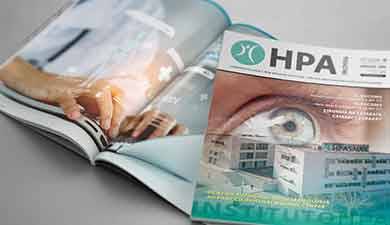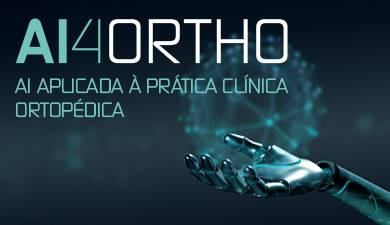Algarve
hospitals
clinics
Alentejo
hospitals
clinics
- Clínica Particular de Beja
- Clínica Particular de Odemira
- Clínica Particular de Vila Nova de Milfontes
Madeira
hospitals
clinics
Unidades Dental HPA
Algarve
Alentejo
Madeira
-
HPA Health Group
-
Units
-
Medical Specialties
-
Facilities
-
Doctors
-
Media
-
Insurance Agreements
-
Medical Tourism
-
Contacts
- Go back
-
Algarve
-
hospitals
- Hospital Particular do Algarve - Alvor
- Hospital Particular do Algarve - Gambelas
- Hospital São Camilo - Portimão
-
clinics
- Centro Médico Internacional - VRSA
- Centro de Ortopedia e Reabilitação - Faro
- Clínica Particular do Algarve - Guia
- Clínica Particular do Algarve - Loulé
- Clínica Particular de Lagos
- Clínica Medchique - Monchique
- Clínica Particular SIIPEMOR - S. Brás Alportel
- Clínica Particular de Vilamoura
- Clínica São Gonçalo de Lagos
- International Health Centres – Albufeira
- Instituto HPA - Montenegro – Faro
- Go back
-
Alentejo
-
hospitals
- Hospital Particular do Alentejo - Sines
-
clinics
- Clínica Particular de Beja
- Clínica Particular de Odemira
- Clínica Particular de Vila Nova de Milfontes
- Go back
-
Madeira
-
hospitals
- Hospital Particular da Madeira - Funchal
-
clinics
- B.clinic
- Madeira Medical Center
- Go back
-
Unidades Dental HPA
-
Algarve
- DENTAL HPA Alvor
- DENTAL HPA Guia
- DENTAL HPA Lagos
- DENTAL HPA Vilamoura
- DENTAL HPA São Camilo
- DENTAL HPA Vila Real de Santo António
- DENTAL HPA Loulé
- DENTAL HPA São Brás de Alportel
- Go back
-
Unidades Dental HPA
-
Alentejo
- DENTAL HPA Sines
- Go back
-
Unidades Dental HPA
-
Madeira
- DENTAL HPA Av. Infante | Funchal
- DENTAL HPA Seminário | Funchal
request appointment / exam
search
contacts
waiting times
Hospital Particular Alvor
UGA Over 1H30Urgent Care
Hospital Particular Gambelas
UGF Over 1H30Urgent Care
UPF 00h00mPaediatrics
Hospital Particular da Madeira
UGHM 00h21mUrgent Care
UPHM 00h06mPaediatrics
Madeira Medical Center
UGMM Unscheduled Medical Carewaiting times
Hospital Particular Alvor
UGA Superior a 1H30Atendimento Permanente
Hospital Particular Gambelas
UGF Superior a 1H30Atendimento Permanente
UPF 00h00mPediatria
Hospital Particular da Madeira
UGHM 00h21mAtendimento Permanente
UPHM 00h06mPediatria
Madeira Medical Center
UGMM Atendimento Médiconão programado
Search
Appointments
Choose an option
You can also contact us by calling 282 42 04 00 Algarve | 269 630 370 Alentejo | 291 003 300 Madeira
(Call to the national fixed network)Appointments
Request Appointment/Request Exam - After completing the respective forms, these requests will be processed by our services, and you will receive confirmation by email. The indications about the Agreements (Insurance/Subsystem) are merely informative, please request confirmation in the "Observations" field.
Schedule Appointment/Exam myHPA - By accessing myHPA Saúde you can make the appointment in real time, directly on the Doctor's schedule according to his availability.
You can also contact us at +351 282 420 400 Algarve | +351 269 630 370 Alentejo | +351 291 003 300 Madeira
Phone booking/service hours:
Monday to Friday: 8:00 AM to 7:00 PM, Saturday: 8:00 AM to 5:00 PM Sunday and Holidays: Closed
(National landline)
Your request has been successfully received. We will confirm your appointment shortly.
Download myHPA Saúde:
HPA Health Group Newsletter:
Subscribe and stay up to date with all the news!
- beginning
- Media
- Media center
- Publications
- Hpa magazine
- Hpa magazine 8
- Treatment with platelet rich plasma prp in orthopaedic traumatology
Dr.ª Maria Miguel Carvalho
Specialist in Orthopaedics and Traumatology
and Sports Medicine
Consultation of the Shoulder

Treatment with platelet-rich plasma (PRP) in orthopaedic traumatology
HPA Magazine 8
The use of platelet-rich plasma (PRP) has become popular in Orthopaedics and Traumatology, especially in the field of Sports Medicine. Fractures, as well as tendon, muscle and cartilage lesions are treated more and more often with PRP.

Football players and other athletes are frequently treated with PRP and this has piqued the interest of the general public. Countless studies have evaluated the efficiency of PRP in diminishing inflammation and pain, in the improvement and accelerating the scarring process, increase in mobility and articular and muscular function. It can be applied in acute situations such as torn muscles or ligaments, accelerating recovery and thus lowering time off sports/work, as well as in more chronic situations, such as tendinitis of the Achilles tendon/quadriceps, epicondylitis and even early stages of osteoporosis.
Platelet-rich plasma is a product derived from the blood of the patient (autologous) which is prepared and centrifuged to obtain a high concentration of platelets (3 to 5 times more) in a limited volume of plasma.
The platelets contain growth factors and bioactive proteins that regulate specific cells, modulating its growth and activity, allowing the recovery of the tissues. This treatment allows for the concentration of a large quantity of growth factors near the lesion. The preparation is then administered to the patient in the doctor’s office or operating theatre, with or without a sonogram.
SOME USES OF PRP:
1. Chronic tendinitis (elbow, knee, hip, ankle, and others);
2. Partial tears of tendons (Achilles tendon, rotulian tendon, quadriceps, etc.);
3. Muscule injuries;
4. To assist in the treatment of delays in consolidation of fractures (known as pseudoarthrosis);
5. Alternative intra-articular treatment in early arthritis;
6. In reconstructive surgeries of tendons and ligaments;
7. As an ancillary to treatment of cartilage injuries;
8. Plantar fasciitis/calcaneal spurs.








